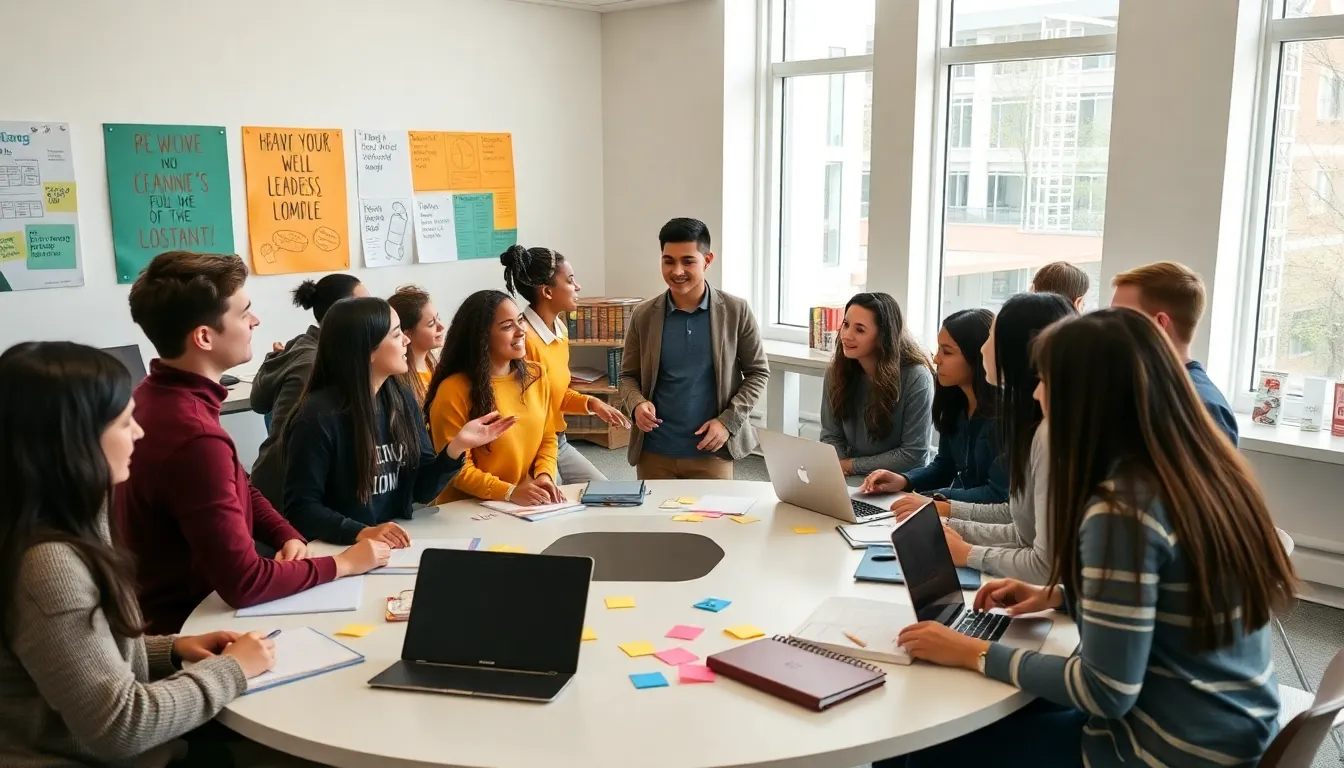High school is the perfect playground for cultivating tomorrow’s leaders. But let’s be honest: it can also feel a bit like herding cats. Encouraging students to step up and embrace leadership can be challenging, yet it’s crucial. Leadership activities not only build skills but also remain memorable experiences that students will cherish and carry into their future careers. From team-building adventures to community service projects, the possibilities are endless and surprisingly fun. So, buckle up as we jump into how these activities can transform the high school experience and set students on the path to success.
Table of Contents
ToggleWhy Leadership Activities Are Important

Leadership activities are vital in shaping the character and skills of high school students. At this age, students are beginning to discover their identities and potential. By participating in structured activities, they can learn essential skills like communication, decision-making, and problem-solving. These skills not only boost confidence but also prepare them for real-world challenges. Besides, involvement in leadership activities fosters a sense of responsibility and accountability. Students become aware of their responsibility towards peers and their communities, which is key in today’s interconnected world.
Studies reveal that students who actively engage in leadership activities tend to perform better academically and socially. The growth of interpersonal skills gained through these experiences enhances their ability to collaborate with others and understand diverse perspectives. Also, teachers and mentors often notice a marked improvement in student engagement and motivation. So, you see, these activities are not just fluff, they’re foundational blocks for future leaders.
Types Of Leadership Activities
Leadership activities come in various forms, each serving a unique purpose. Here are some popular types:
Team-Building Exercises
Team-building exercises offer students the chance to bond while engaging in collaborative challenges. Whether it’s an obstacle course, trust falls, or escape room activities, these experiences help participants develop cohesion and teamwork. The interactions not only promote camaraderie but also highlight each individual’s strengths and weaknesses. That awareness is crucial for any leader aiming to inspire and motivate a team.
Community Service Projects
Community service projects allow students to step outside their comfort zones and engage with the larger world. Organizing food drives, volunteering at local shelters, or participating in environmental clean-up can leave a lasting impact on both the community and the students. Not only does it enhance their empathy and social awareness, but it also teaches them organizational and leadership skills as they plan and execute their projects.
Debate And Public Speaking Clubs
Joining debate and public speaking clubs is an excellent way for students to refine their argumentation and communication skills. These clubs encourage critical thinking while supporting self-expression. By participating in debates, students learn to articulate their thoughts clearly and persuasively, which are essential skills for any leader. Not to mention, they also gain the confidence to speak in front of audiences, a skill that will serve them well throughout their lives.
Peer Mentoring Programs
Peer mentoring programs invite older students to guide and support younger peers. This arrangement not only helps the younger students transition into high school but also empowers the mentors to build their leadership skills. Mentoring encourages reflection on their experiences and fosters a supportive school culture. It creates a sense of community that benefits everyone involved.
Planning And Organizing Events
Planning and organizing events can be one of the most rewarding leadership activities for high school students. Such experiences combine creativity with practicality and can be great for developing critical planning skills. To kick off planning, students first need to identify the purpose of the event. Is it to raise money? Increase school spirit? Perhaps it’s to promote a cultural event? Once the focus is set, they can assemble a committee, delegate roles, and sketch out responsibilities.
Next up is budgeting. Students get to learn about financial management while deciding how much to spend on each aspect of the event. They’ll also need to tackle logistics, this means arranging for venues, gathering supplies, and securing necessary permissions. Coordinating the entire process allows students to gain invaluable insights into project management, making it a hands-on classroom-like experience.
How To Implement Leadership Activities
Implementing leadership activities involves a thoughtful approach. Start by assessing student interests. Conduct surveys or hold focus groups to determine what types of activities might resonate. Once preferences are clear, it’s time to get creative.
Incorporating leadership activities into existing curricula can enhance student engagement. For instance, tie in community service projects with service-learning courses or create a leadership day dedicated to diverse workshops and team-building exercises. Creating a supportive atmosphere is pivotal. Encouragement and recognition from teachers can significantly impact participation rates.
Also, ensure a diverse range of activities to reach different student interests. While some may thrive in public speaking, others may shine in collaborative projects or community service. Tailoring activities to suit varied preferences will engage more students effectively.
Evaluating The Impact Of Leadership Activities
Once leadership activities have been implemented, evaluating their impact is crucial. Feedback from participants can provide insights into what worked and what didn’t. Surveys, reflection journals, or even informal discussions can gather valuable data.
Also, observing changes in student behavior, engagement, and confidence levels can reveal whether the activities were effective. Are students taking on more responsibility? Are they showing increased initiative? Tracking academic performance or participation in more leadership roles can also provide tangible evidence of growth. By evaluating the results, schools can refine and adapt future activities, ensuring they continue to meet student needs.








